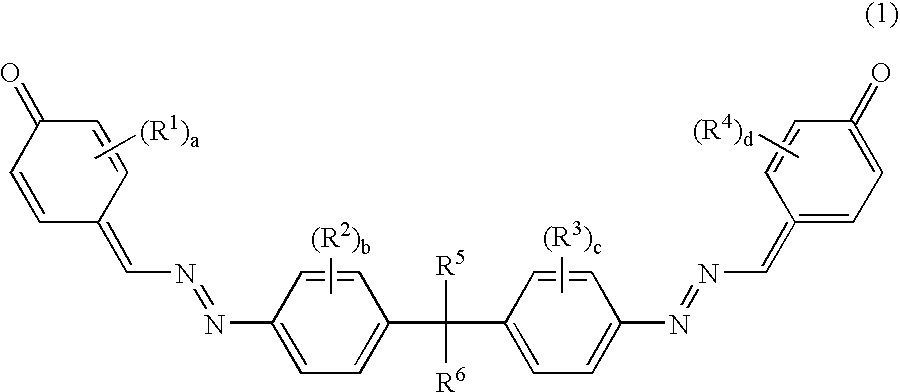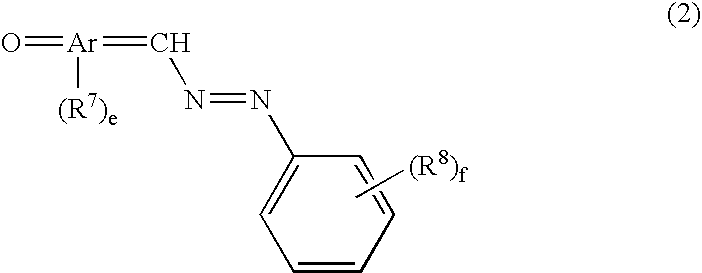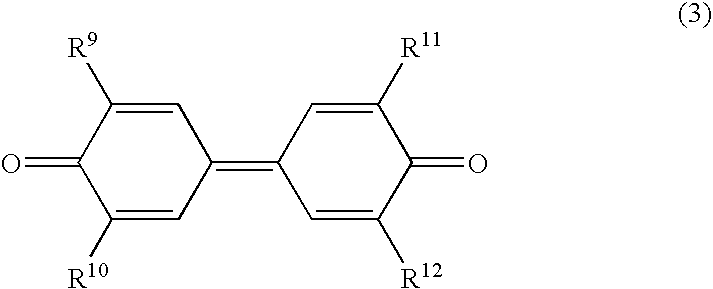Electrophotographic photoreceptor and image forming device
a photoreceptor and photoreceptor technology, applied in the field of electrostatic charge photoreceptors, can solve the problems of light that radiates from the flash lamp (the flash light), leakage of the flash fixing means, and reaches the photoreceptor, and achieves the effect of not reducing the sensitivity of the photoreceptor and its ability to be electrostatically charged
- Summary
- Abstract
- Description
- Claims
- Application Information
AI Technical Summary
Benefits of technology
Problems solved by technology
Method used
Image
Examples
first embodiment
[0053] The electrophotographic photoreceptor according to the present invention is comprised of a support substrate, and a photosensitive layer that contains a charge generating agent and a charge transport agent (a hole transport agent and / or an electron transport agent) and which is provided on top of the support substrate.
[0054] The photosensitive layer will normally be either a single layer type or a laminated type, and either one can be used in the present invention.
[0055] The single layer type of photosensitive layer is comprised of a single photoconductive layer that contains a charge generating agent and a charge transport agent. Here, the single layer type of photosensitive layer is formed by applying a coating liquid on top of the support substrate by means of an application means, and then drying this coating liquid thereof. The coating liquid comprises these compounds (the charge generating agent and the charge transport agent) dissolved or dispersed in a binding resin a...
second embodiment
2. Second Embodiment
[0134] The second embodiment will be described below by pointing out the difference between it and the first embodiment.
[0135] a. Electrophotographic Photoreceptor
(i) Photosensitive Layer
[0136] The electrophotographic photoreceptor according to the second embodiment of the present invention is comprised of a support substrate, and a laminated photosensitive layer. The photosensitive layer includes a charge generating layer that contains a charge generating agent and which is provided on top of the support substrate, and a charge transport layer that contains a charge transport agent (a hole transport agent and / or an electron transport agent like in the first embodiment) and which is provided on top of the charge generating layer.
[0137] The laminated photosensitive layer is formed by first forming the charge generating layer containing a charge generating agent on top of the support substrate by using a CVD vapor growth method or by using an application means, and...
production example 1
(i) Production Example 1
[0158] 5 parts by weight of X type metal-free phthalocyanine as a charge generating agent, 95 parts by weight of Z type polycarbonate (Panlite TS2050, produced by Teijin Chemicals, Ltd.) and 5 parts by weight of polyester resin (RV200, produced by Toyobo Co.) as binding resins, 800 parts by weight of tetrahydrofuran as a dispersion agent, 60 parts by weight of a distyryl compound represented by general formula (7) as a hole transport agent: 31
[0159] and 50 parts by weight of a dinaphthoquinone compound represented by general formula (4-7) as an electron transport agent were mixed together and dispersed in a ball mill for 50 hours, and an application liquid for a photoconductive layer was produced. Next, a fluoride resin blade was used to apply the application liquid to the top of a .phi. 30aluminum tube, and dried at 100 degrees centigrade for one hour, thereby forming a photoconductive layer with a thickness of 20 microns, and producing an electrophotographi...
PUM
 Login to View More
Login to View More Abstract
Description
Claims
Application Information
 Login to View More
Login to View More - R&D
- Intellectual Property
- Life Sciences
- Materials
- Tech Scout
- Unparalleled Data Quality
- Higher Quality Content
- 60% Fewer Hallucinations
Browse by: Latest US Patents, China's latest patents, Technical Efficacy Thesaurus, Application Domain, Technology Topic, Popular Technical Reports.
© 2025 PatSnap. All rights reserved.Legal|Privacy policy|Modern Slavery Act Transparency Statement|Sitemap|About US| Contact US: help@patsnap.com



